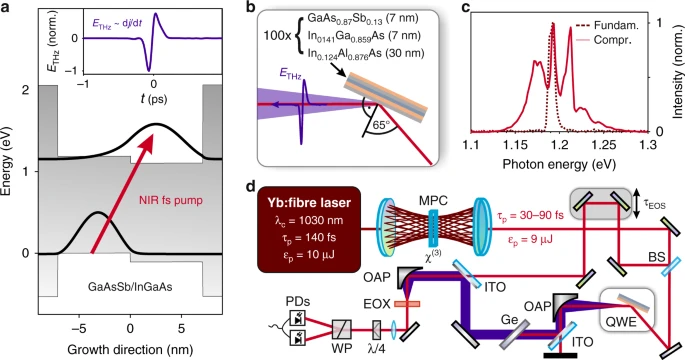Science Daily May 24, 2022
Key applications such as THz scanning tunnelling microscopy or electronic devices operating at optical clock rates call for ultimately short, almost unipolar waveforms, at megahertz (MHz) repetition rates. An international team of researchers (Germany, USA – University of Michigan) has developed a flexible and scalable scheme for the generation of strong phase-locked THz pulses based on shift currents in type-II-aligned epitaxial semiconductor heterostructures. The measured THz waveforms exhibit only 0.45 optical cycles at their centre frequency within the full width at half maximum of the intensity envelope, peak fields above 1.1 kV cm−1 and spectral components up to the mid-infrared, at a repetition rate of 4 MHz. The only positive half-cycle of this waveform exceeds all negative half-cycles by almost four times, which is unexpected from shift currents alone. Their analysis revealed that local charging dynamics induces the pronounced positive THz-emission peak as electrons and holes approach charge neutrality after separation by the optical pump pulse, also enabling ultrabroadband operation. According to the researchers their unipolar emitters mark a milestone for flexibly scalable, next-generation high-repetition-rate sources of intense and strongly asymmetric electric field transients…read more. Open Access TECHNICAL ARTICLE

Concept and experimental setup of THz generation from quantum well emitters. Credit: Light: Science & Applications volume 11, Article number: 151 (2022)